“You are a true monster hunter!”
Truer words have yet to be said since the First Fleet Commander uttered these all too poetic words after the Sapphire Star (the player character) finished off the Arch Tempered Nergigante in the ultimate quest of Monster Hunter World, “The Heralds of Destruction Cry.”
Damn… This series fucking rules.
Monster Hunter is a game series so very near and dear to my heart. I’ve been playing this game for just under half of my life so far, and seeing Monster Hunter Rise on the horizon, I’m looking at more years of bliss. The series’ design has stayed the same, more or less, for the last 16 or so years it’s been in production. I’ve been a fan for 11 of those years, and entered in what fans call the 3rd generation of the series. So, I find my experience with the series starts at a real midpoint of the game progressing and changing. Monster Hunter Rise signals a continuation of the fifth generation, bringing with it brand new ways to enjoy the series. And as the days go by, I’m noticing my midpoint grows ever closer to the “early days” and begins showing more age than change.
What better time to talk about my experiences, huh? The series is at the height of its popularity, and I want to talk about something I love. This love has been well tempered, having been growing alongside this series as it went, and looking back at the games I missed out on. As I’ve grown over the years, learned, changed, and bettered myself; I’ve watched this series do much of the same. So this retrospective serves as a project for me to look back as to why I’ve come to appreciate this series so much, and try and show you my point of view.
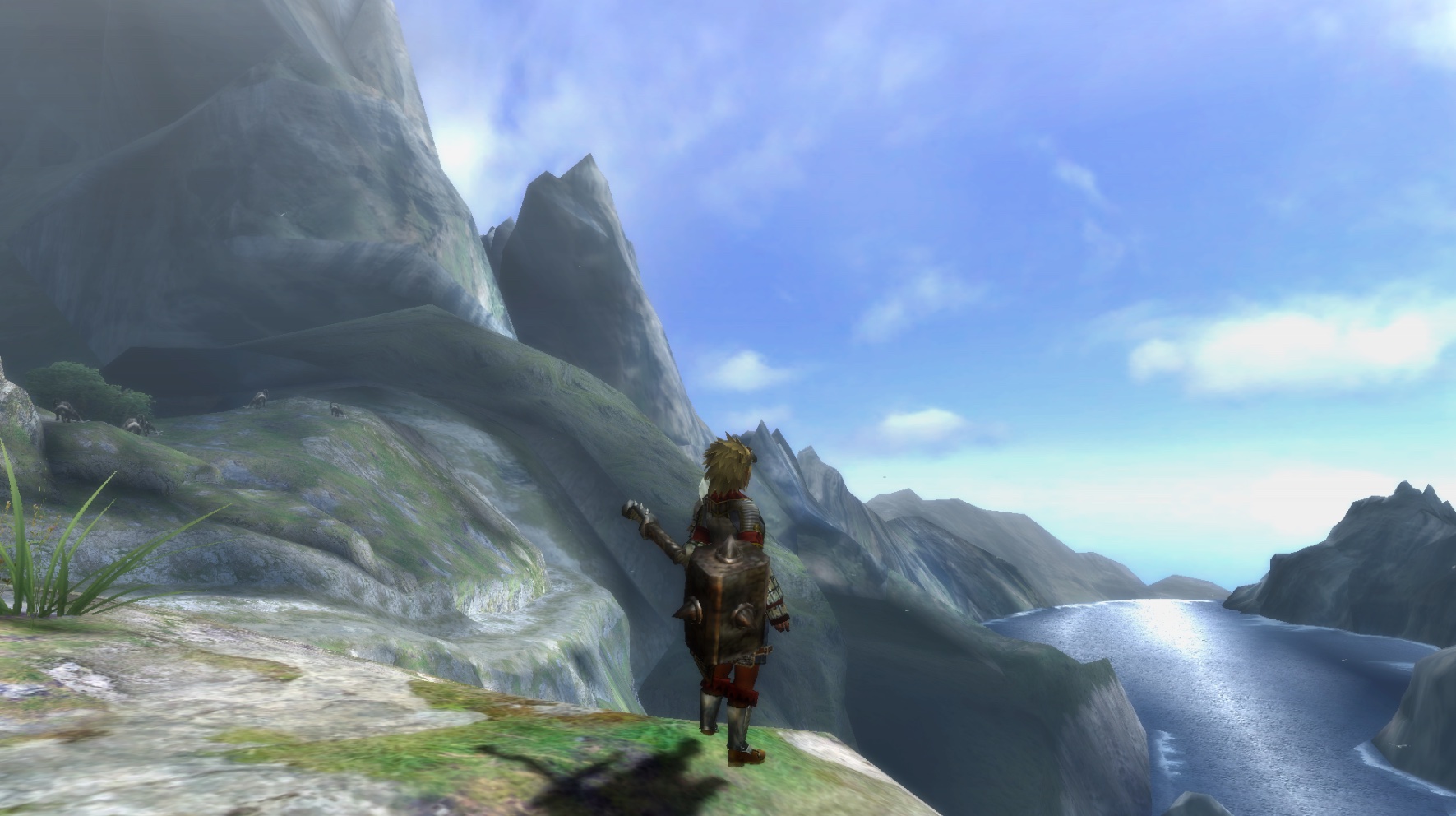
Setting out from Moga Village still brings a tear to my eye.
As someone who began this series in the “middle-child” entry, what better way is there to begin our story of Monster Hunter as a series than in medias res. My first Monster Hunter game was Monster Hunter Tri, released April 20 (ha, nice), 2010 in North America for the Nintendo Wii. While my first memories of this game and my desire to play it are caught in a blur of everything that has happened in the 11 years since, what I can say is that after getting this game in the Spring of 2010 I would eventually rack up about 800 hours played, largely gained during the following summer break from middle school. I can proudly say that I enjoyed almost every one of those 800 hours.
Before I get too ahead of myself, I’ll explain what this game is for those uninitiated.
Monster Hunter is of a particular breed of action/adventure/character action/MMORPG games. It has earned, along with those scant games that share its formula, the moniker of “hunting” game. This is all too appropriate given the series' name. The game has largely been focused on the player guiding their avatar through routine hunting and gathering quests. As the player character advances through the “narrative” (something that has, sadly, always been pretty barebones), they are able to take on tougher quests with stronger quarry. Slaying these beasts grants the player parts to construct stronger armor and weapons, effectively raising the avatar’s strength. Herein is the major loop, and what makes the game different from others of its kind: the avatar gains strength through better armor from stronger monsters alone. Without the armor, the hunter always defaults to almost no mechanical defense, and will always begin hunts with 100 health and 100 stamina no matter how far you progress. The player must then focus on collecting materials to craft stronger defenses against the increasingly challenging monsters, and bettering their prep before hunts to raise their health and stamina before setting off, in order to progress. And thus, the true monster hunting begins.
Monster Hunter Tri (MH3) was where the series began to move forward as an accessible, modern game that would captivate me, and plenty of others like me, for years to come. Playing the game became less frustrating in this installment. Weapon complexity rose, adding to the flow of the gameplay since it became less stiff. Combos were added to the main weapons of the series. Where once you would have to dodge out of the bread and butter, you could press one button to continue the combo. As a teen more accustomed to games where you could find the fun and flow immediately (Call of Duty 4 for the Wii baby! Yeah!), rather than beating my head against it like some retro games, I was able to get hooked much more easily.
One of the most enjoyable aspects to this series is the variety of playstyles the player can take on with its slew of weapon classes. Take for example, the iconic Great Sword. A brutally powerful giant sword, balanced by the sheer weight of the weapon, that slows the hunter to a crawl when unsheathed, and requires long wind-ups for every attack. Now, something completely different, the Light Bowgun. An underslung rifle with a quick fire rate, excellent movement speed, and arsenal of shot types to switch between on the fly during the hunt. Each weapon has its own special je ne sais quoi, whether it's heavy hitting, the ability to knock monsters out cold, or the ability to block attacks from these gargantuan beasts.
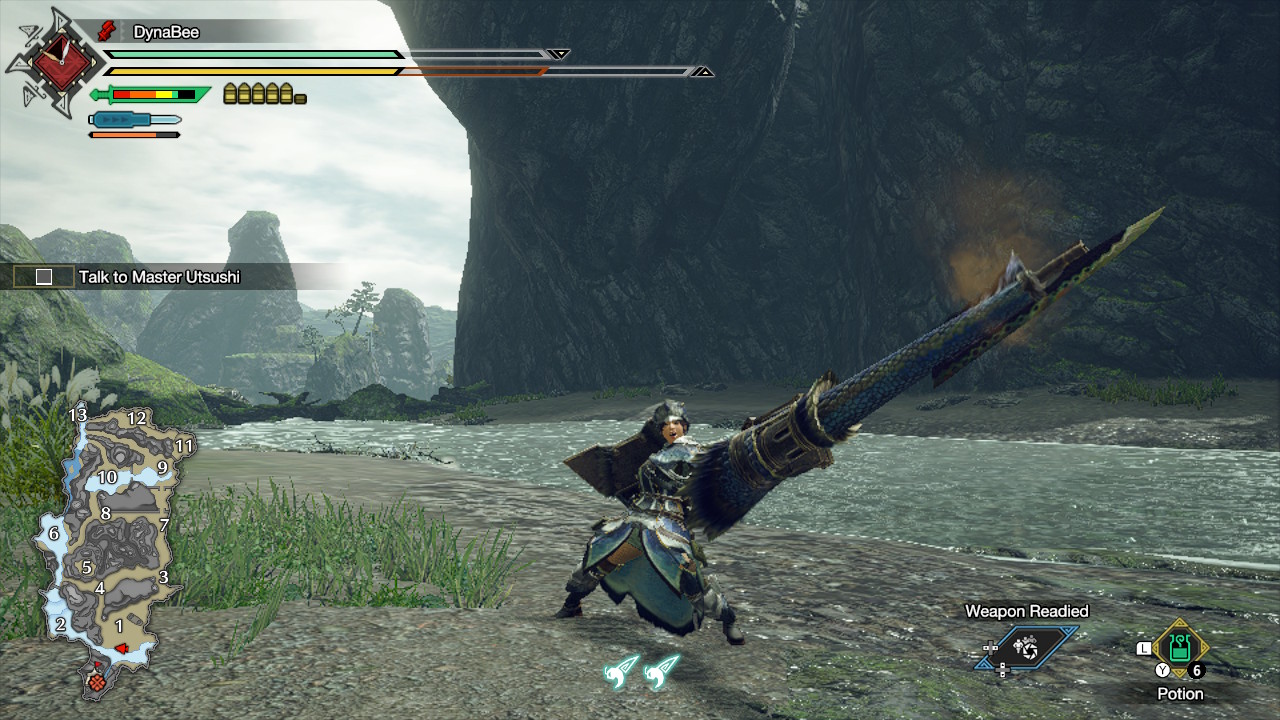
Wait... there's a lance with a huge shield And a cannon at the tip? Fucking Sick!!!!
I spent most of my playtime in MH3 with the Sword and Shield (SnS) weapon, which is the only one available from the start in this game. The SnS is a unique starter because it’s the only weapon that allows you to use items while unsheathed. It’s also one of the few with a blocking ability. Paired with quick attacks and an aptitude for inflicting secondary effects like status and elemental effects, the SnS is an all-rounder with an easy learning curve that caters to multiple playstyles. You can be a quick damage dealer, heal yourself (and others!) with very little downtime, and make mistakes with a backup shield to forgive you. Because of all this, it’s likely 500 of my 800 hours with MH3 were spent with the SnS.
This experience of mine captures what MH3 was doing with the series. Having started on the PlayStation 2 a good 6 years prior, it managed to cultivate a fairly diehard niche fanbase in the US and EU (it’s been wildly popular in Japan since the beginning). The Wii provided an opportunity for the series to, in my mind, tone itself down slightly and reach a more casual audience. The Wii hit the market in an impressive way, and it truly created an era of casual experiences as a market leader. So, to me, MH3 was built to appeal to this more casual base. Co-incidentally, this happens to overlap with most of the Western audience.
But let’s be clear, there were still many odd choices made with this game. One being that the SnS was the sole weapon from the start, where typically the player can switch out to a basic form of any of the 14 or so weapons before their first hunt. More than that, 4 weapon classes were cut entirely! It introduced a fancy new weapon (the Switch Axe, beating out Bloodborne by 5 years) while also making the bowgunning system more complex (you could switch out the stock, body, and barrel and could create a “medium” bowgun. This system never returns...). It added underwater combat, which is reviled by much of the fanbase, yet increased the mechanical complexity (and flow!) of several of the classic weapons for the better… In retrospect there didn’t seem to be a lot of rhyme or reason for these choices, but the areas where it grew and tried new things only benefited the series moving forward. An awkward, lovable, middle-child this game was. Sadly it was only as successful as the very first game in the series, selling ~2 million copies worldwide following the success of Monster Hunter Freedom Unite (MHFU) which sold 3.5 million in Japan alone a year prior. And yet, despite the awkwardness of this game, the experience playing it left me wanting more.
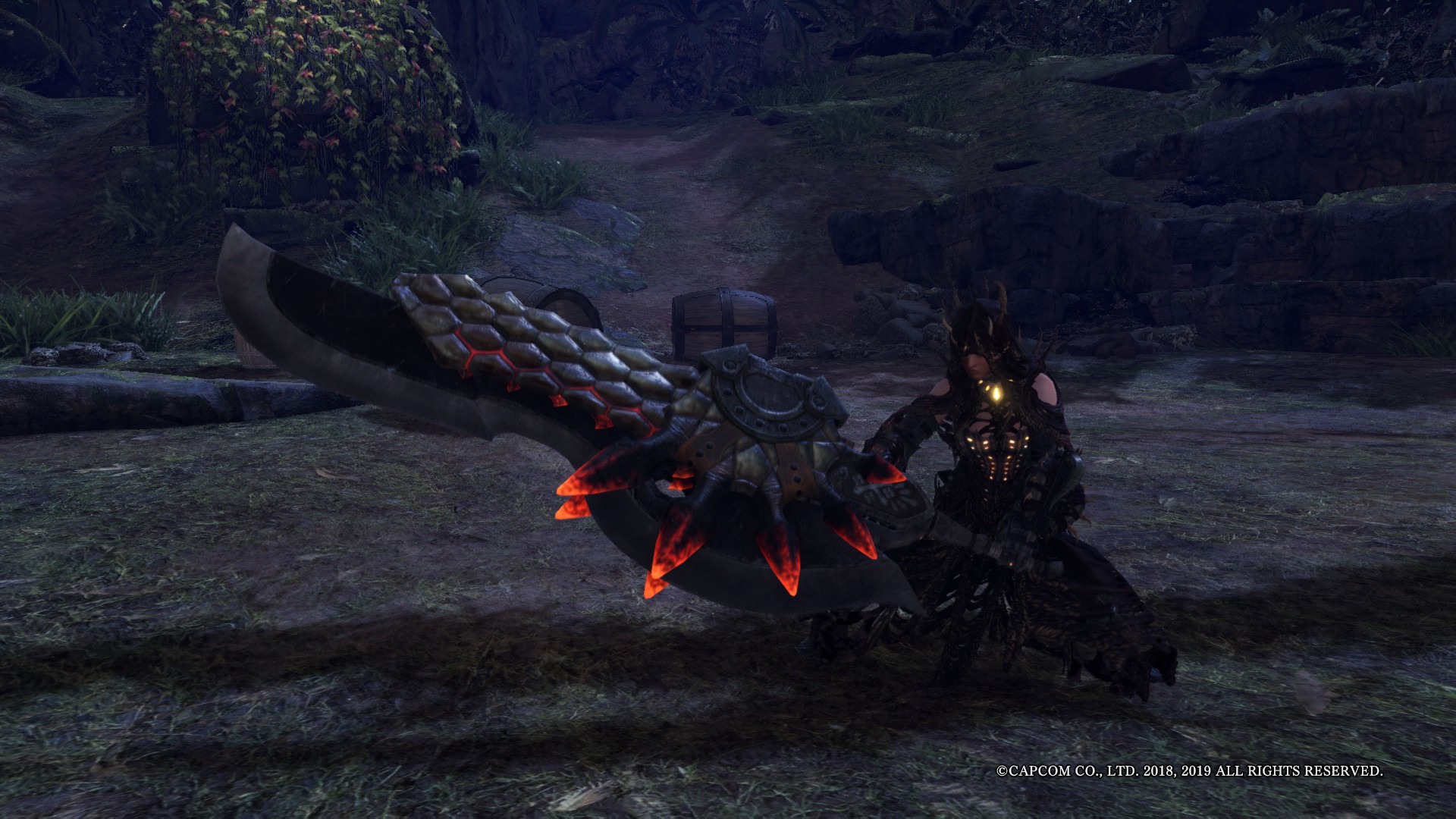
Fear the old blood, hunter…
So I began by looking back at the series’ past. I bought a PSP and a copy of Monster Hunter Freedom Unite (2009) and dove in. 600 hours later, I felt I had a good idea of what the series had offered so far. I’ll be honest, the series grew significantly since its dog days on the PS2. I hadn’t truly realized this until just a few months ago when I was finally able to try out the very first game on an emulator. Monster Hunter (2004) was ROUGH! Only 7 of the current weapons to start with, and 30 monsters total. I get it, it’s the first game. But the controls… My goodness…
So, you know how you’re probably used to using the buttons to do things in games these days? Probably used to using dual analog controls for camera and character movement? (I mean, we have come a long way since the dog days of Nintendo 64.) Well, picture in your mind a dual analog PS2 controller: D-pad on the left above one stick, buttons on the right above the other. So, for a good while, Monster Hunter decided to keep camera and movement controls on the left, and all other actions on the right. This design was at its worst in the first game, where the 4 action buttons were meant to be used for menus and non-combat. Where are the combat buttons, you may ask? Well, half of them can be found using the shoulder buttons, and pressing in on the stick. The other half aren’t button inputs… They’re motions on the right analog stick.
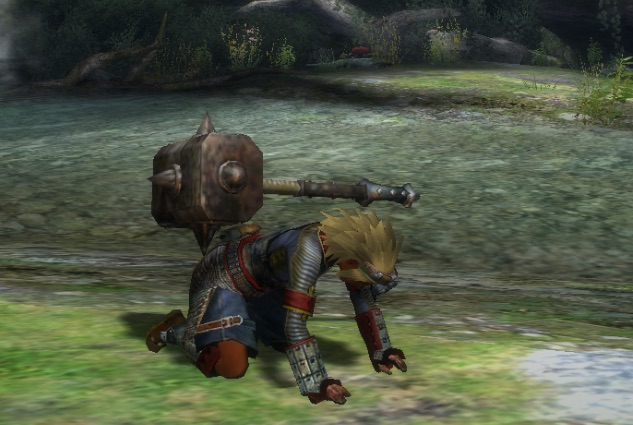
I think I’m gonna yartz…
It’s okay, it can’t hurt you, it’s in the past. Find solace in the fact that, when they moved the series to the Playstation Portable, they were forced to do away with this scheme, as the PSP only had one analog stick. PSP faithfuls, however, still had to deal with the “Claw grip” to keep camera control active during gameplay.
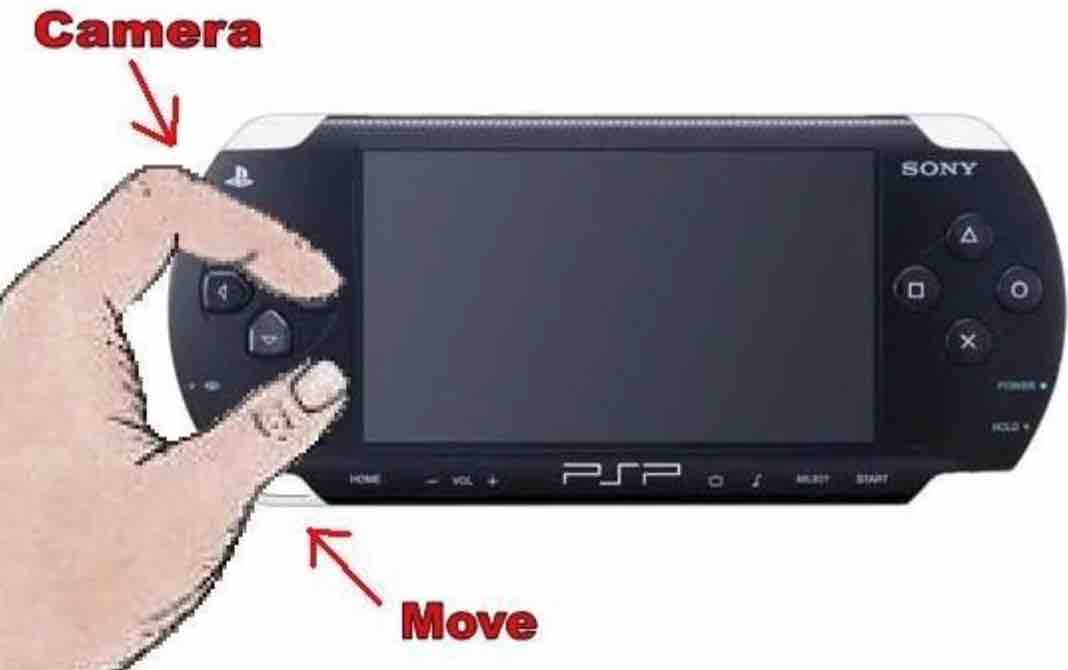
The Claaaaaw. Unleash the beast. Image courtesy of MH Fandom Wiki
Thankfully, game designers wised up, and the dual analog camera control we’ve come to love was brought to the MH3 on the Wii ( “pro” controller included!). Not only this, but the way the weapons felt changed as well. And no, I’m not just talking about being able to use buttons (if you can believe it, that control scheme was included as an option in MH3. Y’know, for crazy folks.)
It took until MH3 for the game to really oil up its joints and shake off design foibles of the past. I think this can be summed up very easily with the Lance. Originally, and faithfully, there is always a 3-poke combo with the lance. You poke three times and then your combo ends. The only other input after the 3rd poke the game allowed was a dodge hop, and then you could start this combo again. Enter MH3 with its addition of the counter-stab. Just one simple move extended this combo so that it could theoretically continue infinitely. 3 pokes, a counter-stab, and you can start it right back again. Finally, Monster Hunter found its flow.
While Monster Hunter matured little by little from MH1 (2004) to MHFU (2009), Monster Hunter Tri (2010) really signalled its first step into the new era. And what would follow MH3 would be even more maturity, complexity, and improvement. As things became more complicated (such as mounting monsters with the fresh addition of jumping in Monster Hunter 4 (2013)), the rougher edges were smoothed.
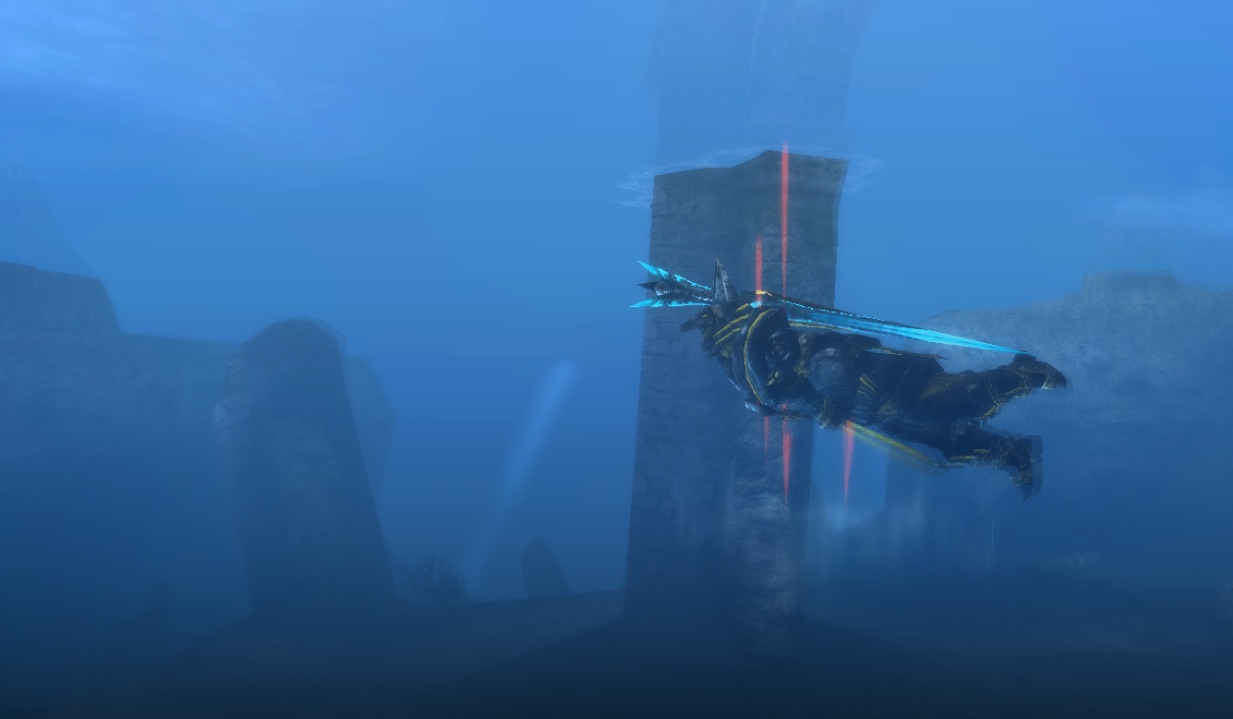
One of these smoothed rough edges: Taking a dip with a giant crocodile.
As the series moved into the 4th generation, these games became even more complex. MH4 added the series’ most technical weapons yet: the Charge Blade and Insect Glaive. The Charge Blade combined the more technical aspects of the Long Sword, Switch Axe, and SnS rolled into one heavy hitting combo-fiend. The Insect Glaive came with the addition of aerial attacks’ newfound importance and a beetle-friend added for good measure (we can all use a giant bug strapped to our arm for reassurance from time to time after all). The following Generations games added Hunting Styles: this offered players four new ways to play with every weapon (in addition to special attacks for each style per weapon). Every new iteration of the series added bulk and content to the last.
This brings us to the modern Monster Hunter games: the Fifth Generation. Monster Hunter World (2018) offers the most interesting changes in the series to date. While MH3 marked MH’s move towards improving mechanical complexity as the series grew, MHW sought to cut the fat and heavily rehaul systems that needed a makeover. Gone were the hunting styles, gone were the arena based loading areas, gone were the traditional armor skills. Definitely saw quite a few monsters not returning. Yet…
Enter: the biggest quality of life shift for any series yet.
Monster Hunter has never been a simple game. There are multitudes upon multitudes of numbers, items, and upgrade paths you have to keep track of over the course of a normal playthrough. So MHW kept some of these key things, such as item crafting progression, but chipped away at the thorns growing on the series from the beginning. One basic change is monster tracking being simplified. The player now learns about the monster through repeated encounters and by picking up on their trail, enhancing their ability to find them and keep track of them for the rest of the hunt. Used to be that you’d craft a paintball to pelt at them as you saw them during quests, and you’d be able to find them on the map from that point on. Problem is, this wore off during the quest, and you’d have to do it again, every single quest. Eventually you’d just know where these monsters went and started as you played, making you feel more like a hunter. But I do not miss this! The tracking in MHW is so much more intuitive for newer players, and makes sense diegetically as well (with the benefit of you being able to find a monster if you haven’t played for a month waiting for DLC monsters to arrive.) There were other more contestable quality of life changes, such as being able to move while healing (wild concept!) and replenish your stock of items at camp. These made the game that much more enjoyable to the less hardcore folk who wanted a game with mechanical deepness, but less encyclopedic knowledge of this deepness required to enjoy it.
But before we move on, one big change I’d like to talk about is armor skills. Beyond the fairly easy to grasp damage numbers of weapons (the number goes up you get more damage), there is the intricate system of armor skills. I said before that this series relies on avatar strength remaining static, and the equipment being the main way to modify this. Each piece of armor has a separate number or numbers dictating what special ability they activate. Say a helmet crafted from one monster gives a +3 to the Bonus Defense skill. If the rest of the armor pieces the hunter equips add up to 10 the skill is activated, and will apply a bonus to the total armor defense of the player. Sometimes this skill is stratified so that getting multiples of 5 adds more of the skill (i.e. +20def for 10, +35def for 15, etc.). Have I lost you yet? I forgot to mention there are negative skills as well. Ok you may have left now, let me get back to the point quickly!
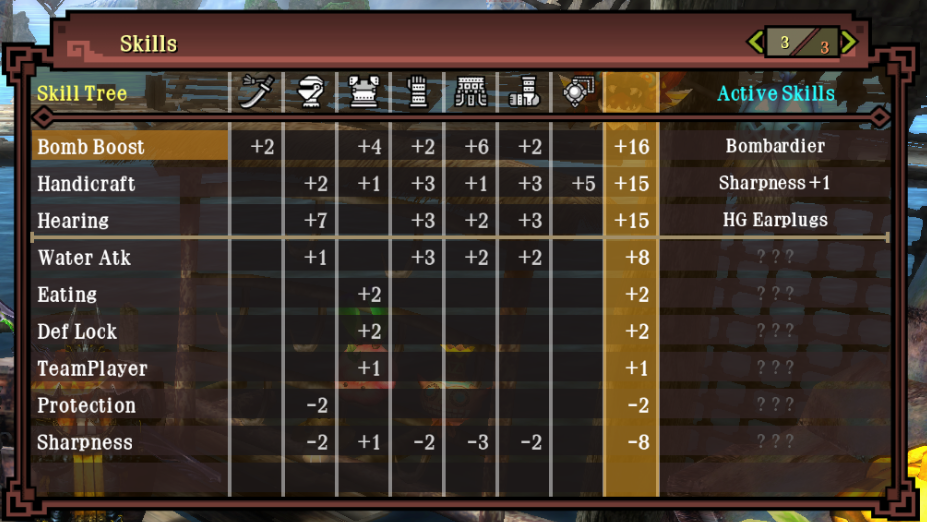
She will not be mourned
Monster Hunter World did away with this system altogether.
For those faithful to the series, this is a bombshell. But I think this was a good and necessary move. Perhaps there is a quiet grace of the dubbed “clownsuit” of different armor pieces from wildly different monster sets (read: designs that were not meant to fit together) kludging together “meta” skills to beef up the hunter considerably. Well fret not, Hardcore McBeeferson, now your more casual friends can actually enjoy it too. Instead of having to track each separate addition per piece, per skill, per set--the plus-fives, minus-twos, times-3s--there is a plain, simple, elegant get-X. No subtractions, just additions (and not even hard ones either). Numbers are scary! Have graphical pips instead! Get 3 pips and you get the best version of a skill. Do away with negativity! Only +40 attack and +100 health! No more are the +7 unactivated skills left hanging in your ugly little outfit. You either have a skill or you don’t: Simple.

I am the Ultimate Weapon
I am a big fan of what Monster Hunter World set out to do. It learned heavily from design trends and its past, and it innovated. But just for a second, let’s consider the opposition. Was there a need to move towards a more hi-fi graphical style? Of course not. Did the levels need to lose their seams, doing away with the staple loading zones and arena based combat? I’d lean towards a yes, but there is some disagreement. And in all honesty, the arena-based nature still remains, just without the relic of disc-based loading sectors reducing technical strain. But was there a need to reduce these sticking points that only served to frustrate even the most diehard of the series? Absolutely. However, many problems still plague the series in this iteration, and new mechanics did come at a trade off. This became clearer when the Iceborne expansion hit, extending the game and its systems to a strain. The expansion brought some of my favorite monsters and designs back home, but it also reminded me about the worst aspects of Monster Hunter’s grindy past.
With Iceborne, the classic Master rank was re-introduced. Typically this is an expansion reserved for a brand new release, so it was more than appreciated to be a lower priced expansion to the main game. Master rank prides itself on being the hardest difficulty with the best items in the game. It rewards game mastery with brand new designs for weapons, armors, and monsters for those players who made it through High rank. These weapons are top class, and look it too, and the armors are not only flashy but allow players to go over the top with skills. This is not only due to them having more/better skills than their High rank counterparts, but they have more slots… And here’s my problem. This is a remnant of that armor problem I explained earlier, where there are ranked item slots for adding additional skills to armor pieces. It exists still in the base game, but here we see it rearing its ugly head again, reminding me of “deco-runs” in the volcanos of previous games. These decorations for these slots are found by defeating incredibly strong monsters, taking on unique resource quests, or a mix of the two. They are completely random drops, and have had Issues in the past. One such issue was how loot tables were assigned. In a sentence, there were times in past games where certain desirable decorations were unobtainable based on when you started your game (yes I’m serious), or at the least gave you verifiably worse chances at getting them. These tables seem to have gone away, but the drop chance still remains and bums me out. They are mitigated slightly by not having those negative skills or too many numbers, but there's even more that was added in Iceborne to make the grind an issue. I’ve already gone on more than I’d like to here, but the Guiding Lands grind for final weapon upgrades was something I just did not care for in the slightest. And don’t even get me started on the bosses with instant kill mechanics…
To me, MHW is the MH3 of the modern age. It introduced a bunch of new problems in an attempt to do something new but improved immensely on its core concept as a series. I’ve yet to say anything about the clutch claw, a well-executed but ultimately flawed system. But I can see its concepts being retained in Rise but reworked into yet another, brand new mechanic. We’ve yet to see how the skill system works, but you know I have my fingers crossed for something akin to World’s. Already we’ve seen the many many ease of use changes returning, hopefully for the foreseeable future. Though MHW, and MHW:I had plenty of flaws, new and old, there were grand enough design changes that greatly prevented this series from ever becoming stale. It too, had its own fluff added, but in doing so, gave players something genuinely new and fun to experience with this series.
In conclusion, I really do like these games very much. It’s nice to write this all out and see that it’s not just nostalgia, but watching the series grow alongside myself. There definitely is a yearning to pick up the older games from time to time, even after the massive quality of life overhaul of MHW. As I’ve grown older, I’ve had less and less time to enjoy these games than I used to, but with the changes over the years, I feel like they’ve come to respect my time as well. Sure there’s still some old, less-than-fun habits have yet to die hard, but the sheer fun I get from picking up my favorite weapon and taking it for a stroll with some brand new moves… Well there’s just nothing like it. Not only do my old favorites seem just as fun as always in Rise, the Hunting Horn has finally been given time to shine. Here’s to the Curbstomp Symphony that awaits in Monster Hunter Rise, and to more great new ways the game will eventually find to beat the snot out of these big baddies.

Hunting Horn in hand.
Beasts perk their ears, the ground shakes
Curbstomp Symphony
And with that, I feel this jaunt down memory lane has finally come to a satisfying conclusion. Monster Hunter Rise is just days away from coming out, and I’ve been sweating for a month about getting this write-up finished before then! Good job, me!!! I hope you’ve enjoyed what I’ve had to say about this game. I certainly had a lot of fun figuring out what would be best to put out on here. And if I have anything more to say, you’ll just have to wait and hear it! And speaking of hearing from me: I’ve been getting ready these past few weeks to stream my playthrough of Monster Hunter Rise on the Switch! I have a capture device set up and ready to go, so all I need is for the 26th to roll around… And for you to come watch me play of course! I’ll be streaming in the afternoon PST on the 26th on my twitch here! And if you want a good reminder for when that time rolls around, please do follow me on my twitter here.
Feel free to add me to your Switch friendlist so I can enjoy this game with you! It is simply much better with more people to play it with. 1162-9996-6015